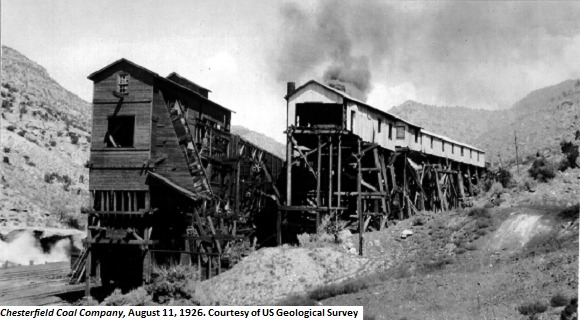Dublin Core
Title
Description
A Grand County mining town that changed its name three times in less than thirty years.
More than a century ago, the town of Ballard, in central Grand County, began to sprout up around a coal mine. The town, which took its name from Henry Ballard, the discoverer of the coal vein that became the town's economic mainstay, didn’t keep its original name for long, however. When the American Fuel Company bought the mine from Ballard, the town was renamed after the company's general manager, Richard Neslen. Under the company’s management, coal poured from the Neslen mines down a railroad spur, destined to feed the fuel-hungry steam engines of the Denver and Rio Grande Railroad. Stores, houses, and a hotel dotted the valley, connected by a sophisticated water system that drew from springs in the mountains, and the latest industrial machinery made the mines around Neslen some of the most efficient in the region. A state of the art power plant even provided electricity to the town.
For all of this progress, however, all was not well in Neslen. The mines were run by a racially- and ethnically-segregated workforce. Greek, Japanese, Italian, and African-American workers were assigned separate quarters in the town Workers were also coerced into buying goods only at the company store and occasional murders rocked the community. The company also was often late in paying miners their wages. By 1915, discontent had boiled over and led to a strike, though it eventually was resolved and the miners returned to work.
In 1918, American Fuel Company sold out to Chesterfield Coal Company, and the town known as Ballard and then Neslen again changed its name, this time to Sego. The mines continued to produce large amounts of coal through the 1920s and 1930s, though in time the demand for coal slowed and the town dwindled. Today it's just another a ghost town perched in southeastern Utah's Book Cliffs.
Creator
Source
Image: Chesterfield Coal Company, August 11, 1926. Tipple and screening plant of Chesterfield Coal Co., Sego, UT. Old, disused washing house on left (used when mining Palisade zone seam). Grand County, Utah. Courtesy of US Geological Survey.
_______________
See Richard A. Firmage, A History of Grand County (Salt Lake City: Utah State Historical Society and Grand County Commission, 199), 230-232. Also see the following issues of the Grand Valley Times: December 29, 1912; November 11, 1913; February 6, 1914; May 8, 1914; December 11, 1914; January 15, 1915; February 5, 1915; February 12, 1915; October 1, 1915; March 17, 191; September 28, 1917. On the miners‟ strike, see Allan Kent Powell, The Next Time We Strike: Labor in the Utah Coal Fields, 1900-1933 (Logan: Utah State University Press, 1992).

